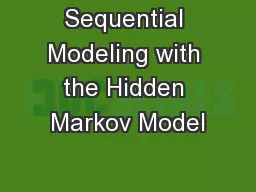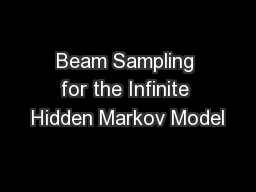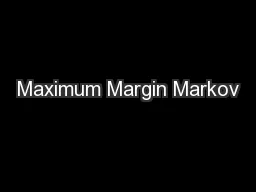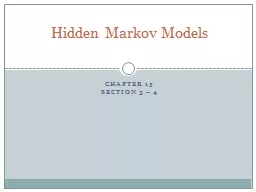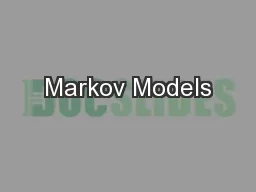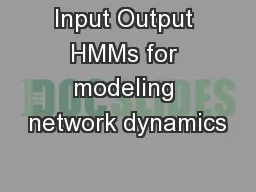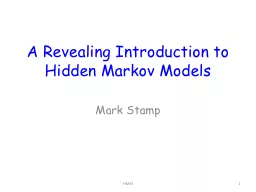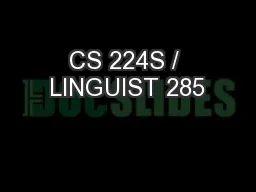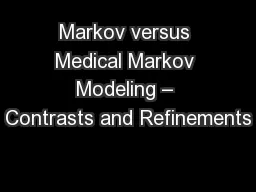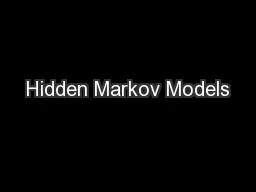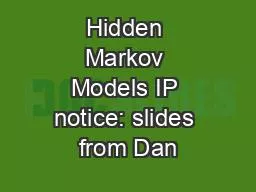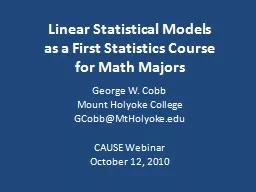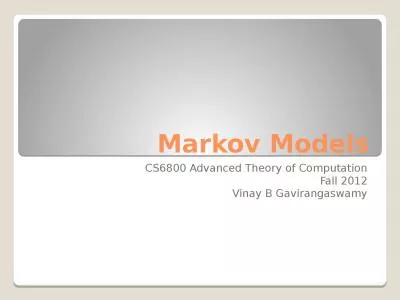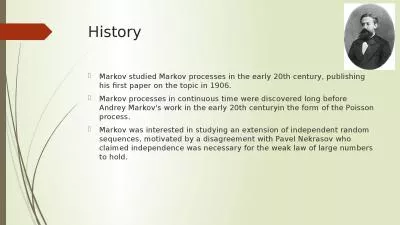PPT-Sequential Modeling with the Hidden Markov Model
Author : yoshiko-marsland | Published Date : 2017-05-25
Lecture 9 Spoken Language Processing Prof Andrew Rosenberg Markov Assumption If we can represent all of the information available in the present state encoding the
Presentation Embed Code
Download Presentation
Download Presentation The PPT/PDF document "Sequential Modeling with the Hidden Mark..." is the property of its rightful owner. Permission is granted to download and print the materials on this website for personal, non-commercial use only, and to display it on your personal computer provided you do not modify the materials and that you retain all copyright notices contained in the materials. By downloading content from our website, you accept the terms of this agreement.
Sequential Modeling with the Hidden Markov Model: Transcript
Download Rules Of Document
"Sequential Modeling with the Hidden Markov Model"The content belongs to its owner. You may download and print it for personal use, without modification, and keep all copyright notices. By downloading, you agree to these terms.
Related Documents

